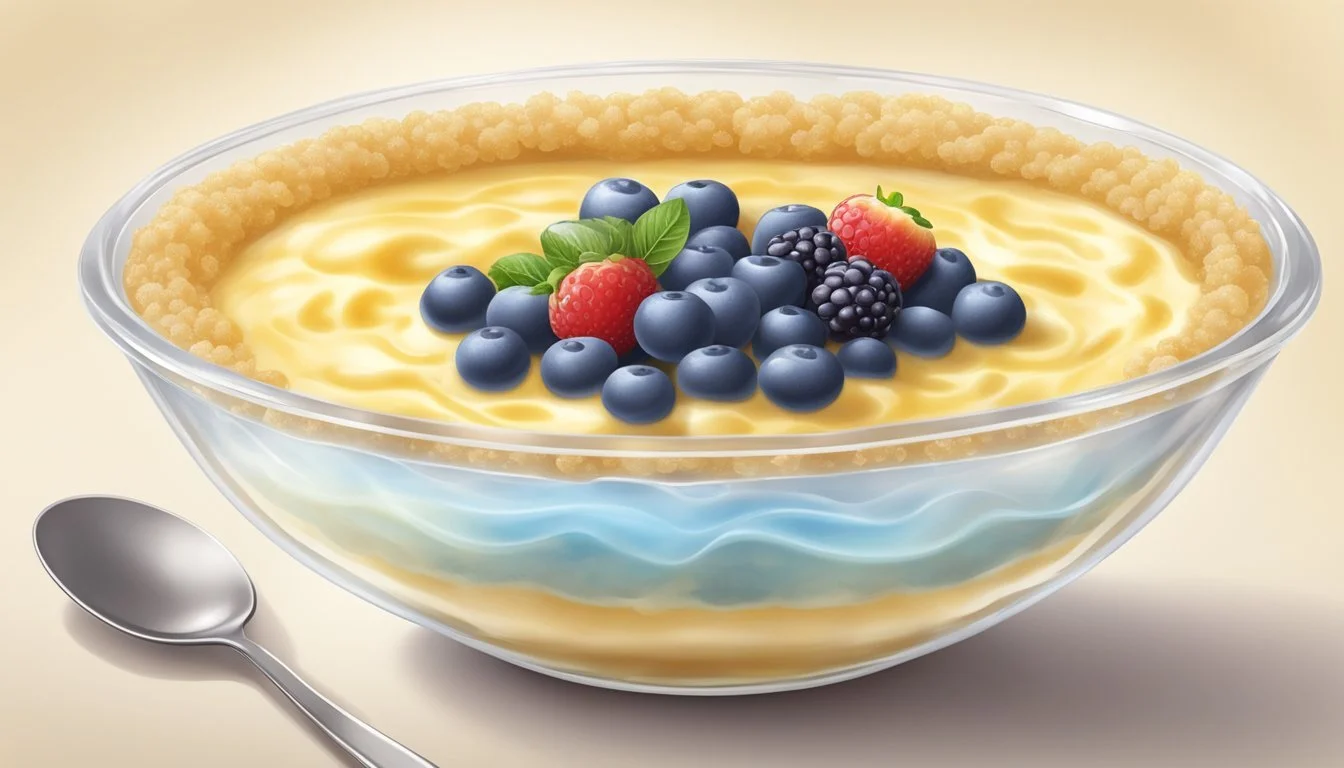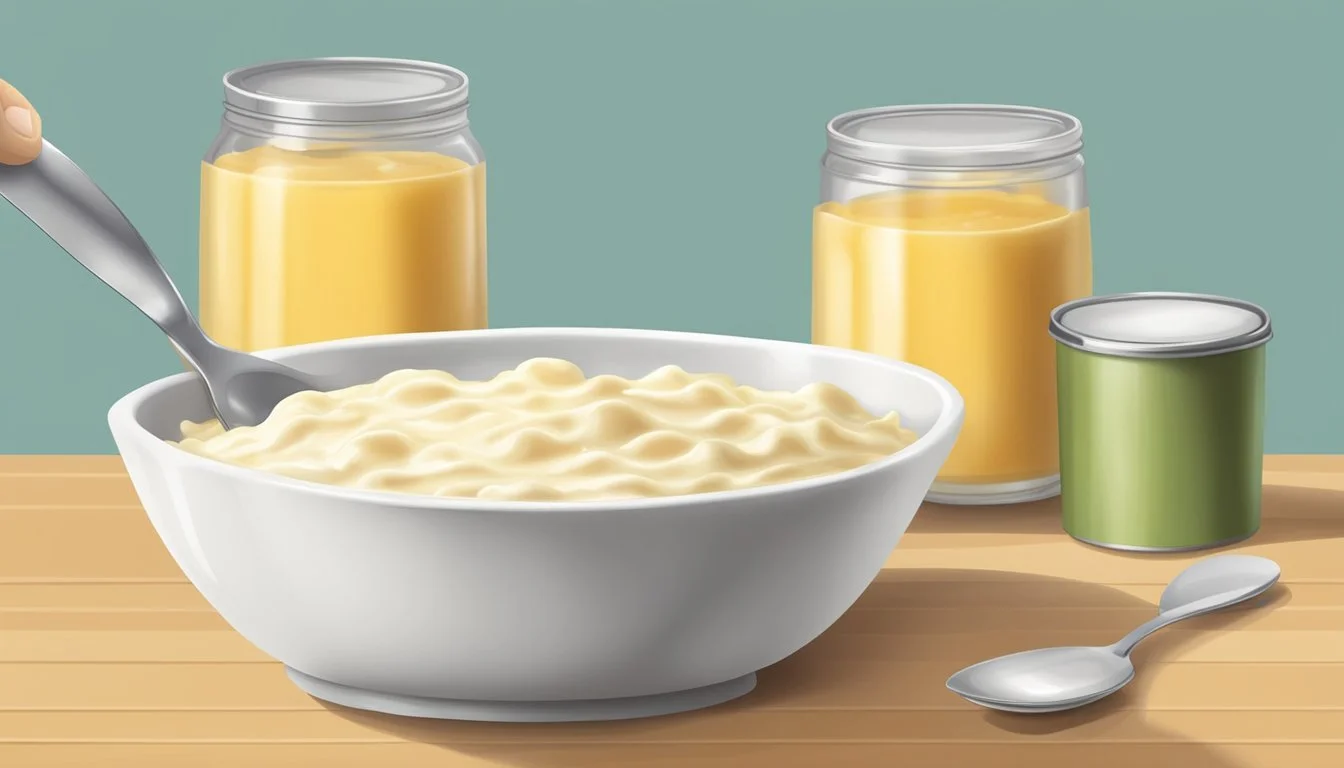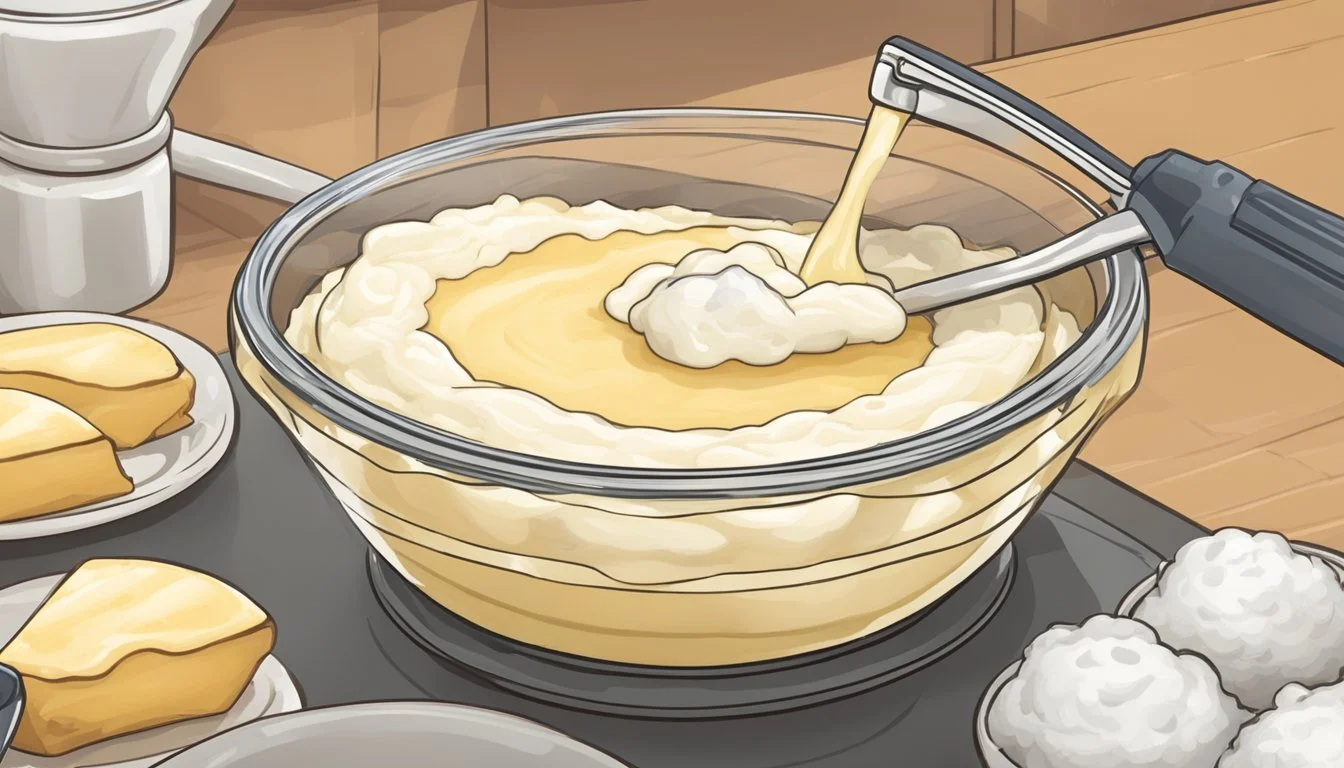Instant Tapioca Pudding Pie Fillings
Quick and Easy Dessert Solutions
Instant tapioca pudding pie fillings offer a delightful combination of creamy texture and convenience, making them a popular choice for dessert lovers. Tapioca, derived from the cassava root, is frequently used in both pudding and pie fillings for its thickening properties and its unique, slightly chewy texture. The instant form of tapioca is particularly easy to incorporate into recipes, as it eliminates the need for pre-soaking the pearls, thus saving time and simplifying the dessert-making process.
In creating an instant tapioca pudding pie filling, home cooks appreciate the straightforward method and the reliably consistent results. Unlike other thickening agents that might require careful cooking or can be affected by acidic ingredients, instant tapioca excels in creating a stable, desirable consistency in fruit pies and cobblers. Additionally, it provides a glossy sheen that enhances the visual appeal of the dessert.
For those seeking an easy-to-make dessert that doesn't compromise on quality, pies using instant tapioca pudding as a filling are an excellent choice. They work harmoniously with a variety of fruits, ensuring that the overall flavor of the pie remains unaltered while achieving a perfect filling density. Whether it's the heightened texture or the subtle sweetness that instant tapioca adds, these pudding pie fillings continue to be embraced by chefs and home bakers alike.
Understanding Tapioca
Tapioca is a versatile starch derived from the cassava root, primarily used to thicken pie fillings and other desserts. Through its various forms, such as flour and pearls, it provides distinct textures and thickening properties suited to different culinary applications.
History and Origin
The cassava plant, from which tapioca is extracted, originates in South America. Historically, it has been a staple food source due to the plant's resilience and adaptability to various climates. Cassava was utilized by indigenous cultures before spreading globally.
Types of Tapioca
There are several forms of tapioca:
Minute tapioca: Quick-cooking tapioca ideal for pie fillings.
Small and large pearl tapioca: Used in puddings, with preparation involving soaking.
Tapioca flour: A fine powder that acts as a substitute for other thickeners.
Tapioca as a Thickening Agent
Tapioca excels as a thickener for its clear finish and ability to absorb water. It is commonly employed in fruit pie fillings for its smooth texture without altering flavor. When heated, the starch granules swell, trapping water and thickening the mixture.
Health and Dietary Information
Tapioca is gluten-free and generally considered safe for those with allergies. It's predominantly carbohydrates and low in calories. Being gluten-free, it's a preferred thickener for individuals with celiac disease or gluten sensitivity.
Purchasing and Storage Tips
Buy tapioca in supermarkets or online. Look for qualifying purchases to ensure quality.
Store in an airtight container away from moisture.
Keep in a cool, dry place or the refrigerator for extended shelf life.
Preparation Basics
Soak large pearl tapioca before use to soften and reduce cook time.
Prep time: Varies based on the form of tapioca.
Total time: Includes preparation and cook time.
Minute tapioca can be used directly without prior soaking.
Tapioca Vs. Other Starches
Compared to cornstarch and flour, tapioca has a more neutral flavor and a glossier appearance in finished dishes. Unlike flour, it doesn't impart a cloudy appearance. Tapioca is also a better choice over cornstarch for acidic fillings, which may break down cornstarch molecules. Rice pudding and pie fillings with gelatin are alternative options, but tapioca provides a specific texture that is unique and often preferred.
Instant Tapioca Pudding
Instant tapioca pudding serves as a delightful dessert on its own and a superb thickener for pie fillings, providing a translucent look and smooth texture without lumps.
Key Ingredients
Milk: A foundational liquid that provides creaminess.
Sugar: Adds sweetness to balance flavors.
Eggs: Contribute to the custard-like consistency.
Vanilla Extract: Enhances overall flavor; vanilla bean can be used for a more intense profile.
Salt: A pinch to bring out sweetness and depth.
Tapioca: Small pearls or instant flakes for thickening.
Essential Equipment
Saucepan: For even heat distribution while cooking.
Whisk: To keep the mixture smooth and prevent lumps.
Measuring Tools: For precise ingredient amounts.
Trivet: Use in a pressure cooker to avoid scorching.
Cooking Techniques
Soak tapioca in milk for 5 minutes.
Heat mixture gradually to a boil, stirring to avoid sticking.
For Pressure Cooker users:
Use trivet and water to prevent burning.
Cook under high pressure for 7 minutes.
Allow for a natural pressure release.
Recipe Variations
Chocolate: Mix in melted chocolate during heating stages.
Fruit: Stir in mashed bananas or blueberries.
Citrus: Add lemon zest for a fresh twist.
Serving and Garnishing
Serve warm or chilled in a bowl.
Garnish with whipped cream or fresh fruit slices.
Can fill a prebaked pie crust for a dessert pie.
Troubleshooting Common Issues
Lumpy Texture: Whisk vigorously to dissolve.
Separation: Ensure even heat and constant stirring.
Too Thick/Thin: Adjust cook time and tapioca amounts.
Pudding Pie Fillings
When crafting pudding pie fillings, meticulous selection of ingredients and understanding the role of thickening agents, like tapioca, are crucial. Equally important is discerning the difference in taste and quality between homemade and store-bought fillings, as well as the correct methods for storing these delicious pie components.
Essential Ingredients
The cornerstone of any pudding pie filling includes sugar, cream, and often some type of fruit. To enhance flavor, ingredients like lemon juice and vanilla are also integral. These components must be balanced to achieve the right texture and taste. Instant pudding mixtures can serve as a base for the filling, providing a quick and easy option that requires minimal additional ingredients, typically just the addition of a liquid such as milk.
Common Ingredients for Pudding Pie Fillings:
Sugar
Cream or milk
Fruit (fresh or canned)
Lemon juice (for balance)
Vanilla extract (for flavor)
Pie Filling Variations
Varied flavors can be achieved by incorporating different fruits or even substituting the cream with custard or mousse for a lighter texture. Seasonal fruits can provide freshness and a unique taste profile, while staples like apple and cherry are traditional favorites. Adjusting the sugar content can cater to those preferring a less sweet filling.
Filling Variations Include:
Seasonal fruit fillings
Chocolate or vanilla custard fillings
Mousse-based fillings for a lighter texture
The Role of Tapioca in Pie Fillings
Tapioca, a starch derived from cassava, serves as a thickening agent that helps bind the ingredients and prevents the separation of juices, ensuring the filling remains clear and not cloudy. The use of instant tapioca is a convenient choice as it thickens quickly without the need for pre-soaking, unlike other forms of tapioca.
Tapioca Qualities:
Thickens without altering taste
Prevents separation of juices
Achieves a clear, glossy appearance in fruit fillings
Homemade Vs. Store-Bought
Homemade tapioca pudding pie fillings often surpass store-bought versions in taste and quality due to the absence of artificial additives and the ability to adjust sweetness and flavor to personal preference. Store-bought fillings, however, offer convenience and consistency, appealing to those with time constraints.
Comparison:
Homemade: Customizable taste, no artificial additives
Store-Bought: Convenient, consistently flavored
Storing and Preservation
Pudding pie fillings can be preserved by freezing, a method that retains quality over time. To freeze, one should cool the filling to room temperature, transfer it to an airtight container, and cover it with plastic wrap to minimize freezer burn. Refrigeration is also an option but typically has a shorter storage life.
Cool filling to room temperature before storing
Cover with plastic wrap before freezing to prevent freezer burn
Opt for airtight containers to maintain freshness
Recipe Guidance
Creating the perfect Instant Tapioca Pudding Pie Filling involves following precise steps, making personal adjustments, understanding portion sizes, and considering delightful enhancements.
Step-by-Step Instructions
Mix Dry Ingredients: Combine 2 tablespoons of minute tapioca with 1/4 cup of granulated sugar in a saucepan.
Add Wet Ingredients: Pour in 2 1/2 cups of milk and stir the mixture until the tapioca is fully integrated.
Cook: Heat the mixture over medium heat, stirring constantly until it comes to a boil. Then, reduce to simmer and cook for an additional 5 minutes or until thickened.
Cool: Remove the saucepan from the heat and let the filling cool. It will continue to thicken as it cools.
Assemble: Pour the cooled filling into a pre-baked pie crust and refrigerate until set.
Adjusting for Taste and Texture
Sugar: Adjust the amount of granulated sugar to increase or decrease sweetness to taste.
Tapioca: For a thicker texture, add an extra teaspoon of minute tapioca. Conversely, for a thinner filling, use less.
Acidic Ingredients: Incorporate a tablespoon of lemon juice or vinegar to balance sweetness, enhancing flavor complexity.
Calculating Servings
Standard Pie: A standard 9-inch pie typically yields 8 servings.
Portion Control: For smaller portions, consider dividing the filling into individual serving dishes before chilling.
Leftovers: Store leftovers in the refrigerator, properly covered, to maintain freshness for up to 3 days.
Enhancements and Add-ins
Fruit: Fold in 1/2 cup of fresh or canned fruit chunks after the pudding mixture has cooled.
Toppings: Garnish with whipped cream or a sprinkle of cinnamon before serving for added visual appeal and taste.
Variety: Experiment with flavor extracts like vanilla or almond for different nuances in your pudding pie.
Cooking Tips and Best Practices
When preparing instant tapioca pudding pie fillings, chefs must prioritize managing temperature for proper consistency, utilize quick-cooking tapioca efficiently, explore complementary flavors, and pay attention to presentation for an appealing finish.
Managing Heat and Consistency
To achieve optimal thickness in pie fillings, chefs maintain moderate heat during cooking. They allow the mixture to simmer, never boil, for even, gradual thickening. Consistency is the key, and thus, they stir the mix continuously to prevent lumping and achieve a smooth texture.
Optimal Temperature: Medium heat
Stirring: Constant to avoid lumps
Quick-Cooking Tapioca Tips
Time-saving and efficiency are paramount with quick-cooking tapioca. Allow the pearls to sit in the mixture for around 15 minutes before heat application. This preparation time allows the tapioca to begin softening and ensures a shortened cooking time while helping the filling thicken more effectively.
Pre-Cooking Wait Time: 15 minutes
Relevant Benefit: Enhanced efficiency and thickening
Flavor Pairing and Combinations
The best pie fillings come from the right balance of flavors. For instance, the addition of a teaspoon of lemon zest or apple pieces can enhance aroma and depth. Chefs often select complementary flavors like vanilla or cinnamon to elevate the natural taste profiles of the filling.
Complementary Flavors: Vanilla, Cinnamon, Lemon Zest
Natural Enhancers: Fresh Fruit Bits
Presentation and Aesthetics
Visual appeal is almost as important as taste. Chefs create a visually pleasing presentation by ensuring the topping is golden and the filling has a consistent sheen. To garnish, they may use whipped cream, a sprinkle of cinnamon, or fresh fruit that echoes the filling’s flavors.
Topping: Golden brown crust with consistent filling sheen
Garnish: Whipped cream, Fresh Fruit, Cinnamon Dusting
The aim is to serve the pie not only with exceptional taste but with a look that invites one to indulge.




